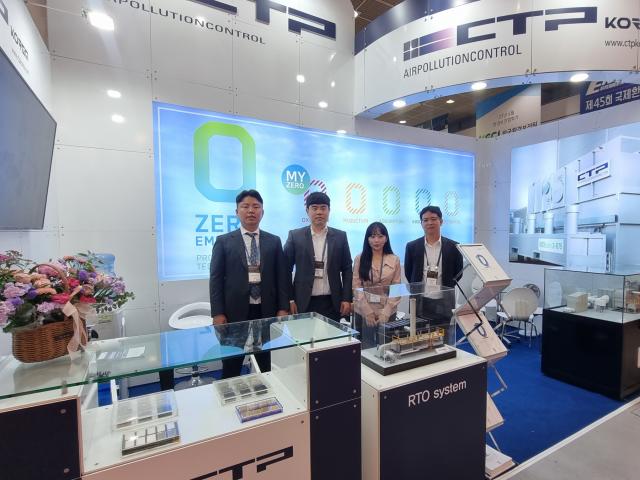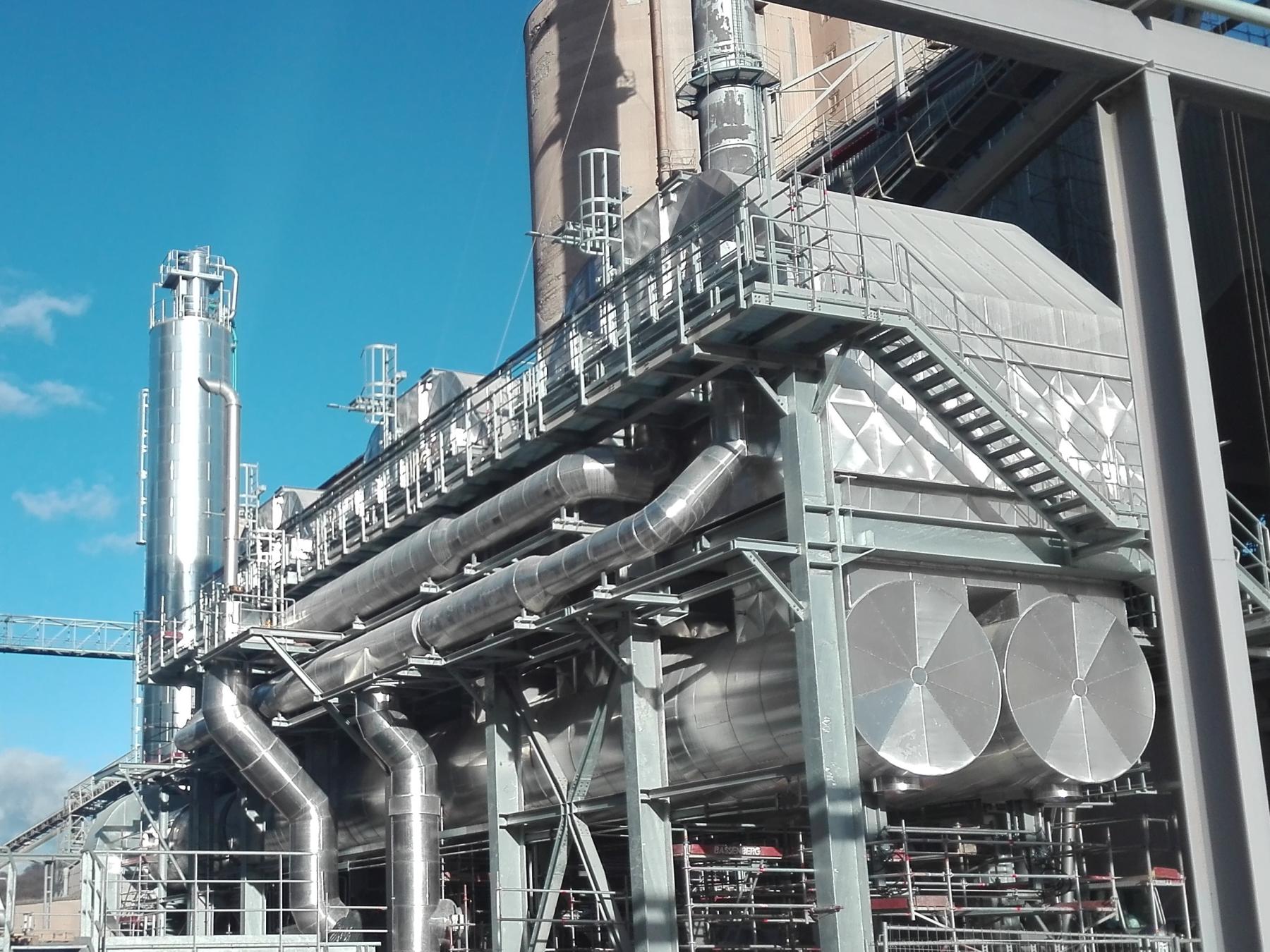
CTP installed the world's first newly developed AutoNOx system, a regenerative SCR plant with associated auxiliary units.
The revision of the 17. BimSchV in Germany, which reduced NOx limits to 200 mg/Nm³ (10% O2, dry), triggered a flood of upgrades to lower emissions.
Opterra Zement GmbH, a subsidiary of CRH, decided to install RSCR systems from CTP on each of the two kilns in their plant in Karsdorf, Germany, after comparing all solutions available on the market.
Each system is designed for 270.000 Nm³/h and will be located downstream of the baghouse, that will be converted from ESP to bagfilter. Each RSCR weighs about 400 tons and is designed with 27.600 blocks. The two RSCR systems will be the first of their kind and combine the advantages of the regenerator with an SCR in a novel way.
The RSCR makes short work of NOx, cutting emissions by more than 85%, while maintaining the NH3 emissions below 30 mg/Nm³ (10% O2, dry). The existing SNCR system, currently used for NOx control, will be taken offline. The RSCR system consists of three pairs of towers, each filled with ceramic honeycombs. The catalyst is arranged between the two heat exchanger beds in each of the three pairs. Cold waste gas enters the heat exchanger from below and is heated on the way into the reaction chamber, which is above the heat exchangers. Above the ceramics, the reducing agent, e.g. ammonia water, is finely dispersed into the gas stream through a distribution grid, before the gas passes through the SCR catalyst. The cleaned gas then passes through another heat exchanger and leaves the system.
In order to cover energy losses of the system and evaporate the reducing agent, an external loop is required. Gases are drawn from the reaction chamber downstream of the catalyst. They are heated up in a separate burning chamber before the reducing agent is injected. The mix is then brought back to the reaction chamber upstream of the catalyst and introduced through the distribution grid.
Since the regenerator provides unparalleled thermal efficiency, the amount of fuel to be added is kept to a minimum. Therefore this RSCR does not rely on the availability of additional heat in the plant and a costly heat transfer system to utilize it, which saves significant cost.
Some other News
CTP TEAM AT POLLUTEC 2023
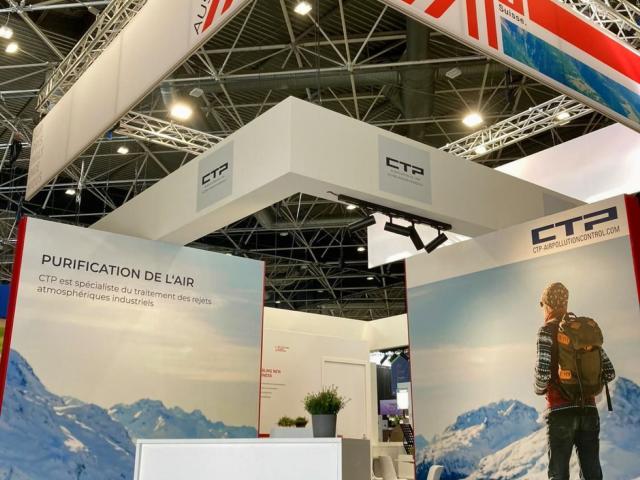
Pollutec 2023 has started, and our expert team is ready to meet you and help you with your environmental needs at our stand in Hall 4, Booth K046.
POLLUTEC TICKET INFORMATION

There is less than one month left until #Pollutec2023. Our expert team will be showcasing our new products and R&D innovations in the air pollution control industry.
INTERNATIONAL DAY OF CLEAN AIR FOR BLUE SKIES

As declared by the UN, September 7th is the "International Day of Clean Air for Blue Skies". While there is still a lot to be done, we would like to use today to highlight and thank our employees, suppliers, and partners. You have all played an instrumental role in efficiently implementing clean air initiatives and tackling #AirPollution and have sustained us since 1985.
MEET US AT POLLUTEC 2023

We are excited to showcase our technologies and R&D developments once again at #Pollutec 2023!
SUCCESSFUL PROJECT COMPLETION IN BELGIUM

Air Pollution Control system installed for one of the world's leading manufacturers for Ethylene-Vinyl Alcohol Copolymer (EVAC) in Antwerp.
CTP FOR FUTURE GENERATIONS
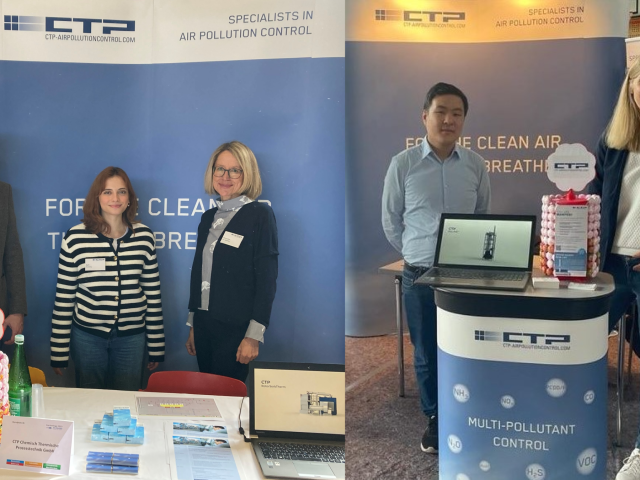
Actively participating in career-days at technical highschools around Austria
Start-up of a complex turnkey air pollution control project in China.

CTP is happy to announce the start-up of a complex turnkey air pollution control system for one of the world’s leading paint and coating manufacturer for their site in China.
Meet CTP at ACHEMA in Frankfurt from August 22-26, 2022
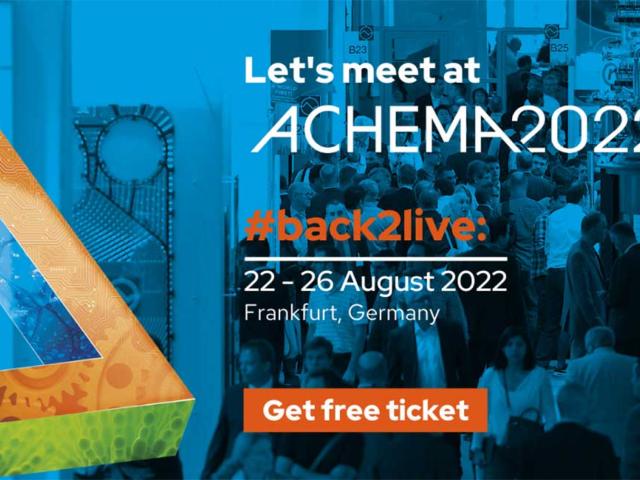
CTP Air Pollution Control is very much looking forward to meeting you at ACHEMA in Frankfurt from August 22 - 26, 2022
Pagination
- Previous page
- Page 2
- Next page
